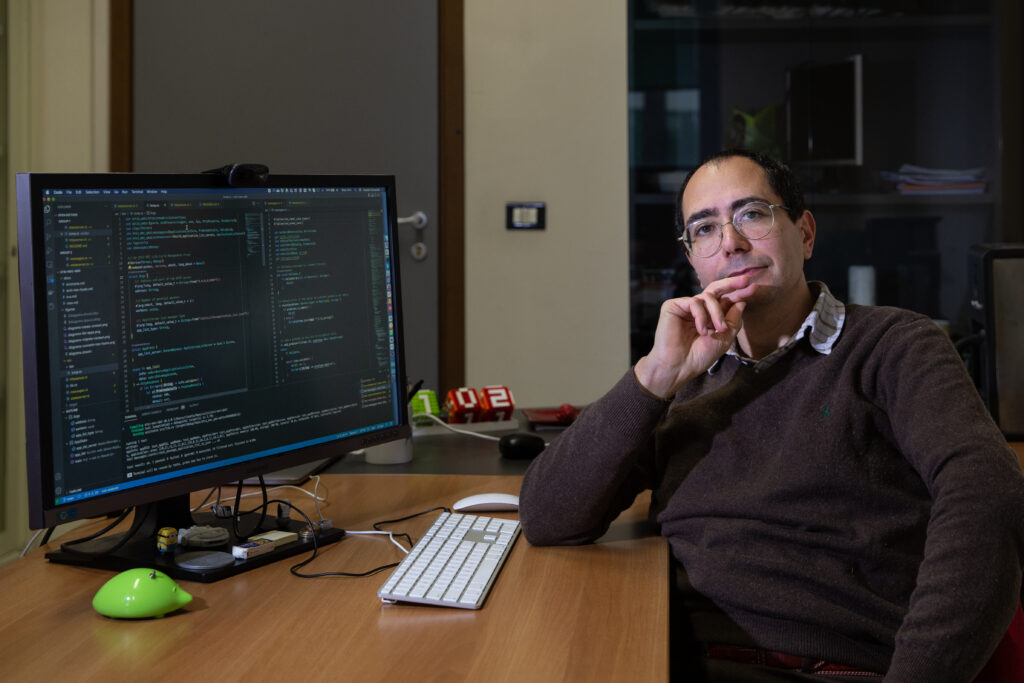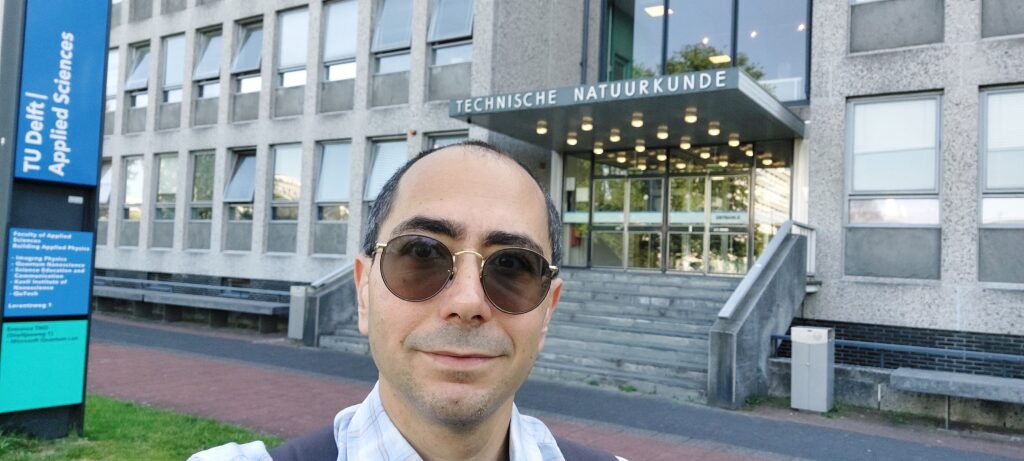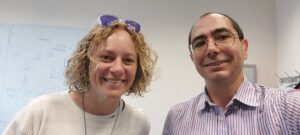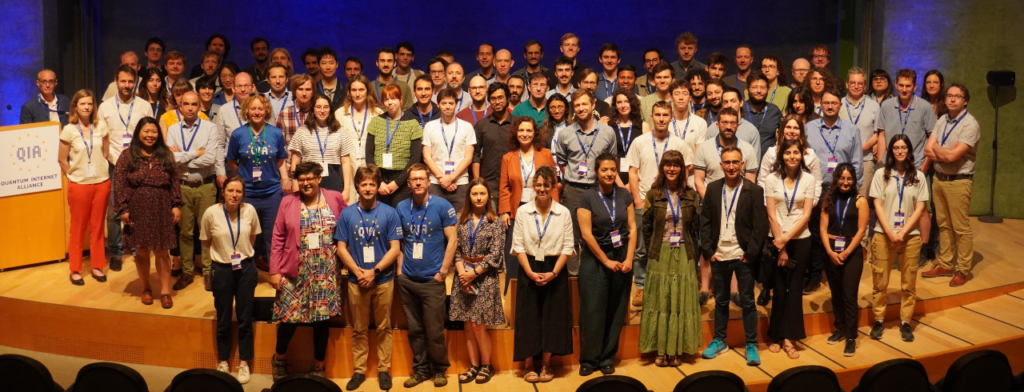26.07.2024Stories
From winning the Quantum Internet Application Challenge 2023 to a collaborative research visit and beyond

An interview with Claudio Cicconetti
A month-long challenge turned into a two-week research visit, and now has the potential to be a long-term collaboration between research groups in Delft and in Pisa. This is what seems to be the story of Claudio Cicconetti, the Quantum Internet Application Challenge (QIAC) 2023 winner, after he joined the QIA initiative in September last year.
QIAC is a QIA initiative encouraging quantum enthusiasts to take part in shaping the future of the quantum internet. It was launched in August 2023 to welcome pioneering application ideas that harness the potential of quantum networks. The challenge winner gets to choose between an internship (for students and young professionals) or a research visit (for researchers) in one of the participating QIA sites.
Claudio chose a two-week research visit in the group of QIA Director Stephanie Wehner at QuTech/Delft University of Technology. The below interview with Claudio offers an interesting peek into this research visit.

About Claudio Cicconetti
Claudio holds a PhD in Information Engineering from the University of Pisa, and has a rich career spanning academia and industry. Formerly an R&D Manager at Intecs and a software engineer at MBI, he is currently a Researcher and head of the |Quantum⟩ lab at IIT-CNR. Claudio manages various EU projects, contributes to national initiatives, and has a notable presence in international conferences and journals.
How did you prepare for this research visit? What were your expectations?
I have long followed the progress of the QIA with great enthusiasm as an external observer. I have been amazed by the relentless effort to assemble the future Quantum Internet, one building block at a time. As a result, I had very high expectations for this research visit, viewing it as an opportunity to learn about exciting new research challenges.
Can you describe a typical day during your research visit? What resources or facilities were most useful or beneficial to your work?

A typical day at TU Delft is quite similar to a regular day at my home institution: reading papers, exploring new ideas, and writing formulas on paper or software on my computer. However, I loved doing all of this while immersed in a highly dynamic research group. Stephanie graciously allowed me to fully integrate into her group, even participating in their regular meetings. This provided me with numerous opportunities to exchange ideas at the whiteboard and speculate about possible new models, methods, and technologies.
What do you think is the most significant outcome of your research visit? What are your new learnings or key takeaways?
During my stay, I worked specifically on a benchmarking suite for quantum networks. This tool represents a significant step forward towards realizing a continuous integration process for quantum network development. I hope to have the opportunity to be involved in this project long term.
However, the most important benefit of my visit is the refined understanding of quantum network technologies, gained directly from the people actively developing them.
How do you see the experience helping with your own research or work at IIT-CNR? Was there any aspect of the program you found particularly valuable for your team?
Quantum networks do not yet exist as commercial devices, so we rely on models in our research activities. My visit provided me with a much better understanding of the fundamental properties of the building elements and how they should interoperate. This will significantly enhance the quality of the research output in this area at IIT-CNR, making it more realistic and, consequently, more impactful in the scientific and industrial research communities.
Are there any plans for future collaborations? What were your contributions during the visit?
We foresee this as a long-term collaboration. We postponed formal arrangements until after the summer, but we have already sketched high-level goals for the benchmarking tool and are planning on how to make it more useful for the community. During my visit, I did my best to bring pointers to known methodologies, tools, and research in the classical networking literature that could be useful for them. I tried to break the silos a bit and share my previous knowledge in classical networks.
In participating in the challenge, I used SquidASM, NetSquid, and NetSquASM, and I think I will use these tools in my future activities to determine the performance of specific elements in quantum networks and nodes.
This hands-on experience with these tools has been invaluable, and I find it particularly valuable that QIA shares their outputs with the community.

